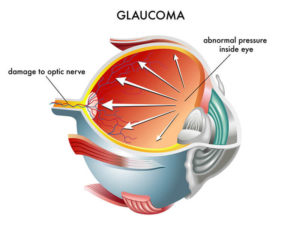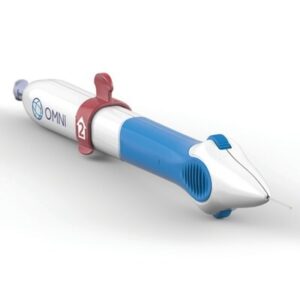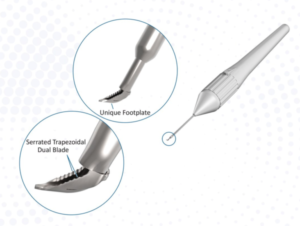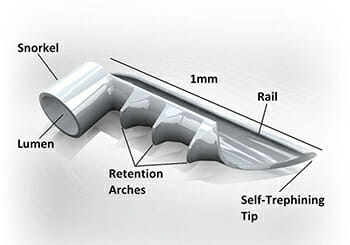Glaucoma is a group of diseases of the optic nerve involving loss of retinal ganglion cells. Glaucoma affects one in two hundred people aged fifty and younger, and one in ten over the age of eighty. It is the second leading cause of blindness worldwide.

What are the risk factors of glaucoma?
Ocular hypertension – or increased pressure within the eye – is the largest risk factor in most glaucoma.
Although raised intraocular pressure is a significant risk factor for developing glaucoma, there is no set threshold for intraocular pressure that causes glaucoma. One person may develop nerve damage at a relatively low pressure, while another person may have high eye pressure for years and yet never develop damage.
Other risk factors include:
- Race (people with African, Hispanic, or Asian heritage)
- Family history
- Age (people older than 40)
- History of eye injury
- Long-term use of steroid medication
- Thin corneas
- History of diabetes, migraines, or high blood pressure
Those at risk for glaucoma are advised to have a dilated eye examination at least once a year.
What are the symptoms of glaucoma?
Glaucoma has been nicknamed the “sneaky thief of sight” because the loss of visual field often occurs gradually over a long time and may only be recognized when it is already quite advanced. Once lost, this damaged visual field can never be recovered.
Symptoms of glaucoma can include:
- Double vision
- Patchy blind spots in peripheral vision
- Eye pain in or around eyes
- Change in the color of the iris
- Sensitivity to light or glare
- Difficulty focusing on objects both near and far
Untreated glaucoma leads to permanent damage of the optic nerve and visual field loss, which can progress to blindness.
How is glaucoma treated?
Although glaucoma cannot be cured, it can be treated. Treatment of glaucoma depends on the severity and progression of the disease. In some instances, eyedrops and oral medication can be used to manage the disease. In more advanced instances, laser or operative surgery to promote fluid drainage from the eye may be necessary.
What is selective laser trabeculoplasty?
Selective laser trabeculoplasty is a surgery designed to treat open angle glaucoma. During this treatment, the doctor lowers intraocular pressure by applying laser treatment and stimulating the cells, improving the outflow of intraocular fluid.
 What is iStent™?
What is iStent™?
iStent™ is a tiny stent that creates a permanent tunnel for fluid drainage. It helps to relieve pressure in the eye and treat glaucoma-related vision loss. The stent is implanted during cataract surgery. Many people with glaucoma also suffer from cataracts. Because cataract surgery is a stitch-less procedure, the stent is implanted without any cuts or incisions.
iStent™ is the first MIGS device that improves your eye’s natural fluid outflow to safely lower eye pressure by creating a permanent opening in the trabecular meshwork.
Proven safe and effective, the iStent™ Trabecular Micro-Bypass:
- is safely implanted during cataract surgery
- spares important eye tissue that is often damaged by traditional surgeries
- does not limit treatment options that could help maintain your vision in the future
iStent Eye Surgery Candidacy
- Currently, iStent™ is only available to people being treated for both cataracts and glaucoma.
iStent™ Facts
In a U.S. clinical study, 68% of glaucoma patients who received iStent™ remained medication free at 12 months while sustaining a target IOP of = 21 mm Hg vs. only 50% of patients who underwent cataract surgery alone.
- iStent™ is the smallest medical device ever approved by the FDA.
- iStent™ is designed to create a permanent opening in your trabecular meshwork, and works continuously to improve the outflow of fluid from your eyes to help control eye pressure.
What is XEN Gel Stent?
The XEN Gel Stent is a medical device that reduces intraocular pressure or IOP. It is roughly the size of an eyelash and gets placed under the white part of your eye called the conjunctiva.
Once in place, the XEN Gel Stent creates a channel for fluid to leave your eye. This reduces IOP, which may reduce your need for other glaucoma medications.
Who is XEN Gel Stent Right For?
The XEN Gel Stent treats primary open-angle glaucoma (POAG) that did not respond to surgery or medications alone. It is a treatment that can assist glaucoma medicine in lowering IOP.
What is the OMNI Surgical System?

The OMNI Surgical System is a new glaucoma treatment that targets all three causes of POAG. This protocol is different than other glaucoma treatments, which target only one area of resistance.
What Are the Advantages of the Omni Surgical System?
It can be challenging to pinpoint the precise cause of POAG. Most treatments, and eye doctors, focus on one potential cause at a time.
The OMNI Surgical System targets all three of the standard points of resistance in eyes with POAG. These points are the trabecular meshwork, Schlemm’s canal, and collector channels.
There is a specific treatment for each of these points of resistance in your eye. It uses one minimally invasive glaucoma surgery (MIGS) device and two implant-free procedures to reduce IOP.
What is TrabEx?
TrabEx is another MIGS device that reduces IOP. When you have POAG one of the likely pinch points that causes pressure to build is your trabecular meshwork.
A pinched trabecular meshwork blocks collector channels, which are an integral part of the eye fluid outflow pathway. The TrabEx devices are specifically designed to remove diseased trabecular meshwork tissue.

Removing this diseased tissue exposes the collector channels, allowing fluid to flow through them.
If your trabecular meshwork is causing pressure to build in your eye, TrabEx could be the relief you need. It is a straightforward procedure done during cataract surgery or as a standalone procedure.
Do you need extra relief from glaucoma? Schedule an appointment at Turlock Eye Physicians in Turlock, CA. Come discuss different treatments for your glaucoma.

 What is iStent™?
What is iStent™?